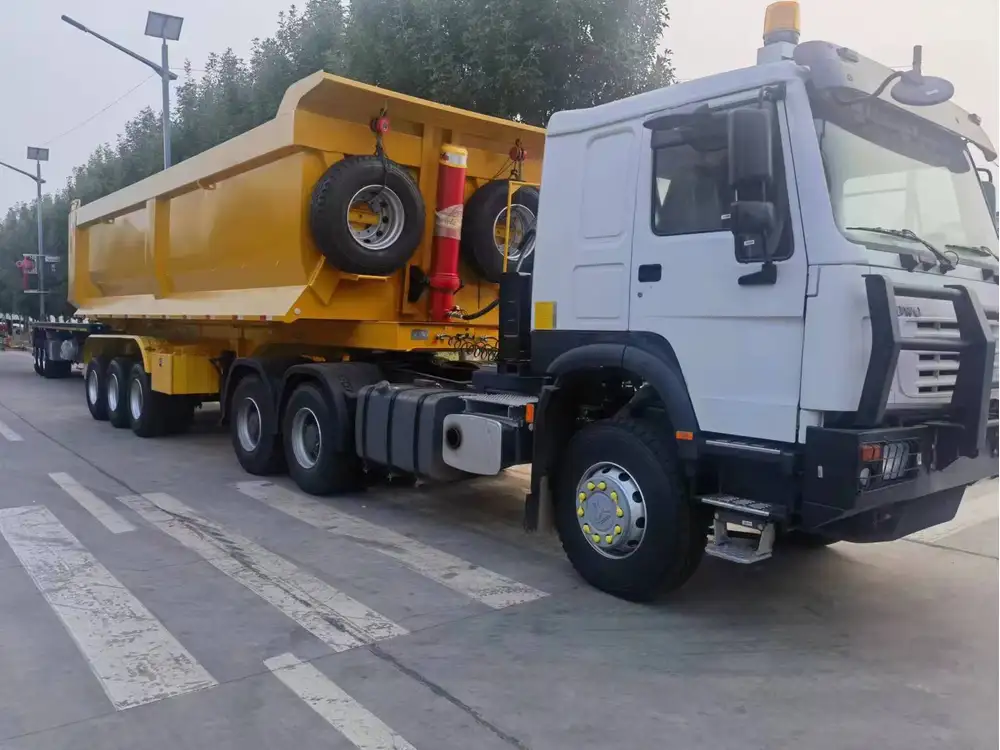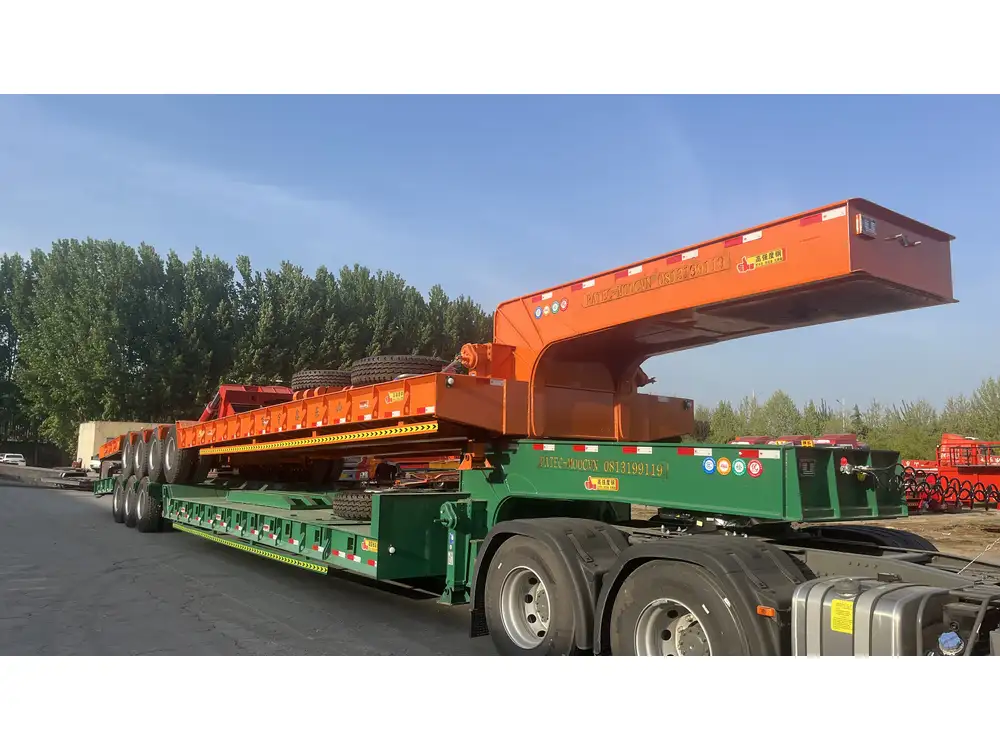When it comes to maintaining a fleet of semi-trailers, understanding the costs associated with tires is crucial. Tires are not just the vehicle’s contact points with the road; they play an integral role in safety, fuel efficiency, and overall operational costs. This guide delves deep into the factors that influence the cost of semi-trailer tires, the types available, maintenance tips, and more.
Understanding the Cost Structure of Semi-Trailer Tires
The pricing of semi-trailer tires can range significantly based on various factors. Generally, the cost of semi-trailer tires can vary from $300 to $600 per tire, depending on the specifications, brand, and type. Below is a comprehensive table that breaks down the major elements affecting tire costs.
| Factor | Description | Influence on Cost |
|---|---|---|
| Tire Type | Radial vs. bias-ply designs, where radial tires typically cost more due to their advanced technology. | Marginally higher for radial. |
| Brand | High-end brands (like Michelin or Bridgestone) often come at a premium compared to lesser-known brands. | Significant variation in price. |
| Tire Size | Larger tires (measured in inches) and specialized sizes for particular trailers can be pricier. | Direct correlation. |
| Load Rating | Tires rated for higher loads are often more expensive and require durable materials. | Higher load ratings lead to increased costs. |
| Tread Design | Specialized tread patterns can enhance traction, which may increase manufacturing costs and thus retail prices. | High-performance designs may incur a premium. |
| Seasonality | Tires designed for winter conditions usually cost more due to additional materials and better traction features. | Seasonal pricing fluctuation. |
| Warranty and Features | Tires offering extended warranties or extra features (e.g., better heat dissipation) tend to be more expensive. | Additional costs associated with premium features. |
Types of Semi-Trailer Tires
Understanding the types of tires available is essential to making informed purchasing decisions. Each type serves distinct needs and conditions, influencing both cost and performance.

1. Radial Tires
Radial tires have become the preferred choice for most semi-trailer applications. Due to their design, they offer better fuel efficiency, longer tread life, and superior heat dissipation compared to bias-ply tires.
- Cost Range: $350 – $600
- Key Benefits:
- Enhanced fuel economy
- Greater stability and handling
- Longer life expectancy
2. Bias-Ply Tires
These traditional tires are built with layers of cord running at angles, providing robust performance for heavy loads. Bias-ply tires are generally cheaper but do not match radials in terms of longevity or efficiency.
- Cost Range: $300 – $450
- Key Benefits:
- Lower initial purchase price
- Good for off-road applications
3. Low-Profile Tires
These tires provide enhanced stability for high-performance trailers. Their design mitigates sway and enhances grip but come with a higher purchase price.
- Cost Range: $400 – $700
- Key Benefits:
- Improved handling
- Better responsiveness

4. Specialty Tires
These include tires designed for specific conditions such as winter or off-road driving. Their costs can vary widely based on features and intended use.
- Cost Range: $450 – $750
- Key Benefits:
- Optimized for specific conditions
- Superior grip and traction
The Impact of Maintenance on Tire Longevity
Investing in high-quality tires is just the first step. Maintenance plays a crucial role in determining how long a tire lasts and ultimately its total cost of ownership.
1. Regular Inspections
Conducting regular inspections can significantly enhance the longevity of semi-trailer tires. Fleet managers should check for:
- Tread wear: Uneven wear may indicate alignment issues.
- Air pressure: Under-inflated tires can lead to overheating and blowouts.
- Cracks and bulges: Visible damage can compromise safety.

2. Tire Rotation
Rotating tires according to a set schedule ensures even wear across all tires, extending the life of the entire set. A common recommendation is to rotate every 6,000 to 8,000 miles.
3. Proper Inflation
Maintaining proper tire pressure can contribute significantly to fuel efficiency by reducing rolling resistance. Under-inflation can reduce tire life by 25% or more.
| Inflation Pressure | Effect on Tire Longevity | Recommended Regular Check |
|---|---|---|
| Under-inflated ( | Increases heat and wear, potential blowout risks | Bi-weekly or before long trips |
| Over-inflated (>10% high) | Causes uneven wear and can lead to punctures from road debris | Bi-weekly or before long trips |
| Properly inflated | Optimizes performance and fuel economy | Monthly or as per manufacturer guidelines |
4. Choose the Right Load
Overloading can severely affect tire performance. Each tire is designed for a specific weight limit; exceeding this can lead to premature wear or blowouts.

Costs Associated with Tire Maintenance and Replacement
When evaluating how much semi-trailer tires really cost, it’s essential to consider the ongoing expenses related to their maintenance and eventual replacement.
1. Mounting and Balancing Fees
When purchasing new tires, mounting and balancing them can add an average of $15-$30 per tire to the initial cost.
2. Alignment Costs
Misalignment can cause rapid tire wear. Correcting alignment typically costs between $75 to $100, depending on the service provider.

3. Regular Maintenance Budget
Implementing a budget for routine maintenance (rotation, inspections, inflation checks) helps to foresee costs. A typical maintenance budget for tires could average $300 – $600 annually per trailer, factoring in wear and periodic replacement.
Environmental Considerations and Tire Disposal Costs
With increasing environmental regulations, it’s crucial for fleet owners to consider the disposal of old tires. Tire manufacturers are now encouraged to implement recycling programs. The costs of tire disposal can typically range from $2 to $5 per tire, depending on local regulations and practices.
Benefits of Recycling Tires
- Reduces environmental footprint
- Lowers disposal costs through recycling programs
- Allows for materials to be repurposed—creating a sustainable cycle

Conclusion: Making Informed Decisions on Semi-Trailer Tires
When determining how much semi-trailer tires cost, one must consider not only the purchase price but also the various expenditures related to maintenance, replacement, and disposal. The complexity of tire pricing reflects a range of variables: type, brand, load ratings, and even environmental considerations.
For fleet owners and operators, the key is to:
- Invest wisely based on applications and usage.
- Incorporate regular maintenance into operational budgets.
- Make informed choices about tire disposal and recycling programs.
By approaching semi-trailer tire costs holistically, you can enhance both safety and efficiency, minimizing risks and maximizing the lifecycle of your tire investments. If you wish to delve deeper into specific brands or tire specifications, consulting expert reviews and comparison tables can further guide you in optimizing your tire strategies.



